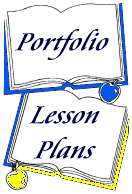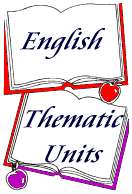![]()
|

Outlining
This section on planning combines the "bones" of your thesis or question with the "flesh" from your research and insights to construct a unified essay body.
An outline is the organizational plan for your paper. You know your starting point: your introduction and thesis/research question. You know your destination: some sort of summative and thoughtful conclusion. But how are you going to get from one to the other? An outline does not just help you articulate what you plan to say, but also how you are going to move from supporting paragraph to supporting paragraph, how you are going to get where you want to go.
The importance of outlines:
-
if you can't articulate your paper even in point form, you won't be able to do it effectively and it will take you much longer to write an inferior draft
-
if you do find structural problems or gaps as you outline, it's easier to fix them now than to try and totally revamp a 3rd draft. Face it, it's always easier (translation: less intellectually painful) to scrap a note than a paragraph or whole essay
-
any teacher will tell you that you will lose more points for lack of substance than for lack of writing style; outlines are all about the crux and direction of substance
-
should things click into place, an outline gives you confidence. It helps you to realize that, yes, you really do know what you are talking about
-
stream-of-consciousness writing can be published and fascinating as creative writing, but not as a research paper. Markers don't appreciate mental diarrhea or what Kevin B. Bucknall from Griffith University calls The Shotgun Technique: "This is putting down everything you know about the subject, and is a common fault. It is like firing a shotgun and hoping that some of the many pellets hit home." So have some respect for your readers
-
outlines make drafting less stressful not only by describing the relationship of your ideas to each other and to the thesis or question, but because you now have small manageable chunks to tackle
-
many teachers will be delighted to make an appointment with you to go over an outline but not a draft
How to construct your own
The first step to constructing an outline is to carefully read the notes you
took from the last steps. Try to find classifications for your findings that
relate to your thesis or research question. Look for common trends. They're
going to be separated from each other but gather them together. It doesn't
really matter how you classify.
You can classify using a variety of techniques. If you like putting notes on index cards, then paper-clip ones that go together and shuffle them around to achieve the best order of ideas. You can also do this on paper: use different-colored symbols or highlighters or cut your sheets into strips (if you wrote on only one side of the page).
With several piles of related concepts before you, think of other ways of grouping that might make equal sense.
Once you're happy with what you've got, you may find that some sections are strong and fleshed-out whereas others are weaker. Do some more research where needed or see if two "weak" sections just couldn't fit under one stronger heading. Perhaps as hard as you try, your points fit together but not with the overarching argument you're making. In that case, don't be afraid to re-evaluate your thesis; it may just need a qualification. Your evidence may be great but if it supports a different thesis, your readers won't see how great it is because they'll be expecting something else.
What should an outline look like?
It doesn't really matter. Unless you have to hand it in for marks or you
really do like the process, don't feel you have to get bogged down in the
formal, "roman-numeral" structure. If webbing or point form does it
for you, then that's what you should use.
Check out this possible template for an argumentative paper and this one for an analytical paper. Remember that they are just possible structural ideas.
Helpful links
- Organizing your Ideas from Kathy Livingston's site on essay writing
- Methods of Organizing your Essay from the UVic Writer's Guide
- The Structure of the Essay Outline, also from the UVic Writer's Guide
- How to Effectively Organize a Paper from Bowling Green State University's OWL
- Organizing Your Writing, lots of activities from Paradigm Online Writing Assistant




